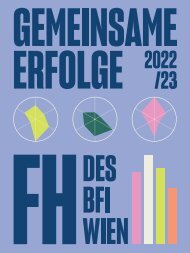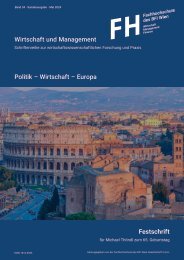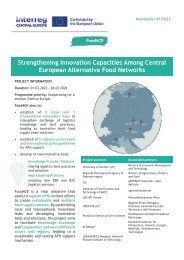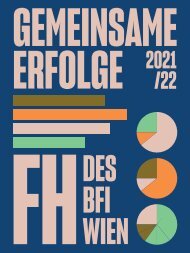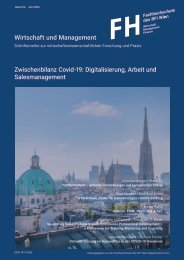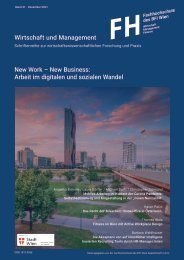The EU, the EEU, and the War in Ukraine: Political Risks and Management Options
This special issue entitled “The EU, the EEU, and the War in Ukraine: Political Risks and Management Options” is published within the framework of the Jean Monnet Network project “The EU and the EEU: Between Conflict and Competition, Convergence and Cooperation” (EUCON). The aim of this project co-funded by the Erasmus+ programme is to explore the complexity of relations between the European Union and the Eurasian Economic Union.
This special issue entitled “The EU, the EEU, and the War in Ukraine: Political Risks and Management Options” is published within the framework of the Jean Monnet Network project “The EU and the EEU: Between Conflict and Competition, Convergence and Cooperation” (EUCON). The aim of this project co-funded by the Erasmus+ programme is to explore the complexity of relations between the European Union and the Eurasian Economic Union.
- No tags were found...
Create successful ePaper yourself
Turn your PDF publications into a flip-book with our unique Google optimized e-Paper software.
Oxana Karnaukhova<br />
Follow<strong>in</strong>g <strong>the</strong> Strategy, <strong>the</strong> <strong>EU</strong> goes beyond governments <strong>and</strong> looks at civil society participation,<br />
demonstrat<strong>in</strong>g its ‘bl<strong>in</strong>dness’ to <strong>the</strong> authoritative presence of most of <strong>the</strong>ir visions, as ‘as experts<br />
on <strong>the</strong> ground, <strong>the</strong>y often lead <strong>the</strong> process of susta<strong>in</strong>able development’ (Von der Leyen 2019).<br />
<strong>The</strong> difficulty with this approach is <strong>the</strong> failure to underst<strong>and</strong> that all Central Asian elites are<br />
<strong>in</strong>terested <strong>in</strong> ma<strong>in</strong>ta<strong>in</strong><strong>in</strong>g a system of patrimonial rule. Moreover, Central Asia presents itself<br />
as an arena of <strong>in</strong>tra-regional compet<strong>in</strong>g leadership projects, shared between Kazakhstan <strong>and</strong><br />
Uzbekistan respectively. In particular, Uzbekistan’s concerns about its own sovereignty, its<br />
leadership position <strong>in</strong> <strong>the</strong> region <strong>and</strong> its ‘safe belt of friendly neighbours’ (Development Strategy<br />
2017) demonstrate <strong>the</strong> complexity of <strong>in</strong>tra-regional ties <strong>and</strong> <strong>in</strong>fluence <strong>the</strong> <strong>in</strong>terpretation of <strong>the</strong><br />
content of <strong>the</strong> partnership with <strong>the</strong> <strong>EU</strong>.<br />
To underst<strong>and</strong> <strong>the</strong> <strong>in</strong>ternal mechanisms of Central Asia’s <strong>in</strong>clusion <strong>in</strong> relations with <strong>the</strong> EA<strong>EU</strong>,<br />
attention should be paid to <strong>the</strong> concept of <strong>the</strong> ‘near abroad’ as an area of direct <strong>in</strong>terest <strong>and</strong><br />
streng<strong>the</strong>n<strong>in</strong>g Russia’s leadership position <strong>in</strong> <strong>the</strong> Eurasian region. <strong>The</strong> concept of <strong>the</strong> ‘near<br />
abroad’ <strong>in</strong> Russian foreign policy has been <strong>and</strong> rema<strong>in</strong>s an important concern of <strong>the</strong> Russian<br />
Council on Foreign Affairs, which supports <strong>and</strong> promotes Russia’s geopolitical <strong>in</strong>terests <strong>in</strong> <strong>the</strong><br />
region. This position is illustrated by <strong>the</strong> Collective Security Treaty. <strong>The</strong> Consortium was created<br />
as an extension of <strong>the</strong> Commonwealth of Independent States (CIS) <strong>in</strong> 1992 before <strong>the</strong> NATO-<br />
Russia summit <strong>in</strong> Rome <strong>and</strong> exp<strong>and</strong>ed <strong>in</strong>to an organization <strong>in</strong> 2002. It meant an alliance of Russia<br />
with Tajikistan, Kyrgyzstan <strong>and</strong> Kazakhstan. <strong>The</strong> last two mentioned countries later jo<strong>in</strong>ed<br />
<strong>the</strong> EA<strong>EU</strong>, with Kazakhstan as a found<strong>in</strong>g state.<br />
In 2001, <strong>the</strong> Agreement on <strong>the</strong> Eurasian Economic Community (EurAsEC), signed by <strong>the</strong> Russian<br />
Federation, Belarus, Kazakhstan, Kyrgyzstan <strong>and</strong> Tajikistan, gave new life to <strong>the</strong> Eurasian<br />
Community Customs Union. <strong>The</strong> Treaty confirmed <strong>the</strong> hierarchy with<strong>in</strong> <strong>the</strong> Union’s membership<br />
<strong>and</strong> Russia’s privileged position: 40% of <strong>the</strong> vote was given to <strong>the</strong> Russian Federation. Russian<br />
became <strong>the</strong> official language of <strong>the</strong> Union (see <strong>the</strong> 2000 Treaty on <strong>the</strong> Eurasian Economic Union).<br />
Armenia jo<strong>in</strong>ed <strong>the</strong> EurAsEC as an observer <strong>in</strong> 2003, <strong>and</strong> Uzbekistan became a member <strong>in</strong> 2006.<br />
Intraregional <strong>in</strong>tegration efforts faced competition from a stronger player <strong>and</strong> lost out (CACO<br />
<strong>and</strong> EurAsEC merged <strong>in</strong> 2005). Regional actors had different views on <strong>the</strong> cooperation regime<br />
<strong>and</strong> <strong>the</strong>ir political hierarchy meant that <strong>in</strong>tra-regional attempts ra<strong>the</strong>r quickly led to a merger <strong>in</strong>to<br />
larger <strong>in</strong>ter-regional <strong>in</strong>stitutional structures with <strong>in</strong>fluential decision-mak<strong>in</strong>g leaders.<br />
In 2011, as prime m<strong>in</strong>ister, Put<strong>in</strong> announced <strong>the</strong> creation of “a powerful supranational association<br />
capable of becom<strong>in</strong>g one of <strong>the</strong> poles of <strong>the</strong> modern world <strong>and</strong> serv<strong>in</strong>g as an effective bridge<br />
between Europe <strong>and</strong> <strong>the</strong> dynamic Asia-Pacific region, that is, to transform <strong>the</strong> Customs Union of<br />
Russia, Belarus <strong>and</strong> Kazakhstan <strong>in</strong>to <strong>the</strong> Common Economic Space <strong>and</strong> <strong>the</strong>n <strong>in</strong>to <strong>the</strong> Eurasian<br />
Union” (Put<strong>in</strong> 2011). <strong>The</strong> system of bilateral <strong>and</strong> regional multilateral agreements makes<br />
Eurasian <strong>in</strong>tegration more comprehensible for exist<strong>in</strong>g members <strong>and</strong> potential participants, <strong>and</strong><br />
<strong>the</strong> emphasis on scrupulous adherence to <strong>the</strong> pr<strong>in</strong>ciple of economic sovereignty makes it more<br />
resilient to global challenges. An important addition is <strong>the</strong> assertion of Russian leadership <strong>in</strong><br />
global economic, political projects, especially <strong>in</strong> <strong>the</strong> so-called security regions, i.e. Central Asia.<br />
44 Wirtschaft und <strong>Management</strong> · B<strong>and</strong> 33 · März 2023




